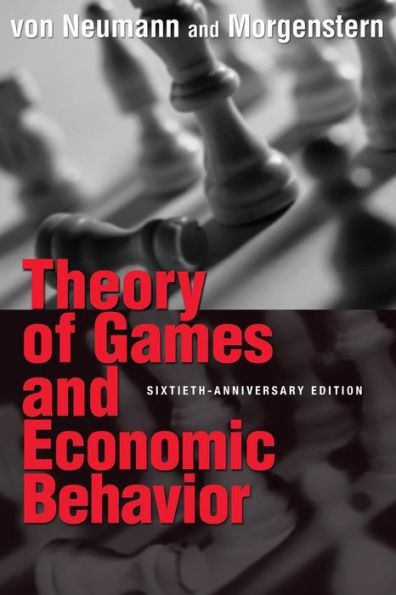5
1
9780691130613



Theory of Games and Economic Behavior: 60th Anniversary Commemorative Edition / Edition 60 available in Paperback, eBook

Theory of Games and Economic Behavior: 60th Anniversary Commemorative Edition / Edition 60
- ISBN-10:
- 0691130612
- ISBN-13:
- 9780691130613
- Pub. Date:
- 04/08/2007
- Publisher:
- Princeton University Press
- ISBN-10:
- 0691130612
- ISBN-13:
- 9780691130613
- Pub. Date:
- 04/08/2007
- Publisher:
- Princeton University Press

Theory of Games and Economic Behavior: 60th Anniversary Commemorative Edition / Edition 60
$70.0
70.0
In Stock

Product Details
| ISBN-13: | 9780691130613 |
|---|---|
| Publisher: | Princeton University Press |
| Publication date: | 04/08/2007 |
| Series: | Princeton Classic Editions Series |
| Edition description: | 60th Anniversary Commemorative Edition |
| Pages: | 776 |
| Sales rank: | 589,756 |
| Product dimensions: | 6.00(w) x 9.25(h) x (d) |
About the Author
From the B&N Reads Blog
